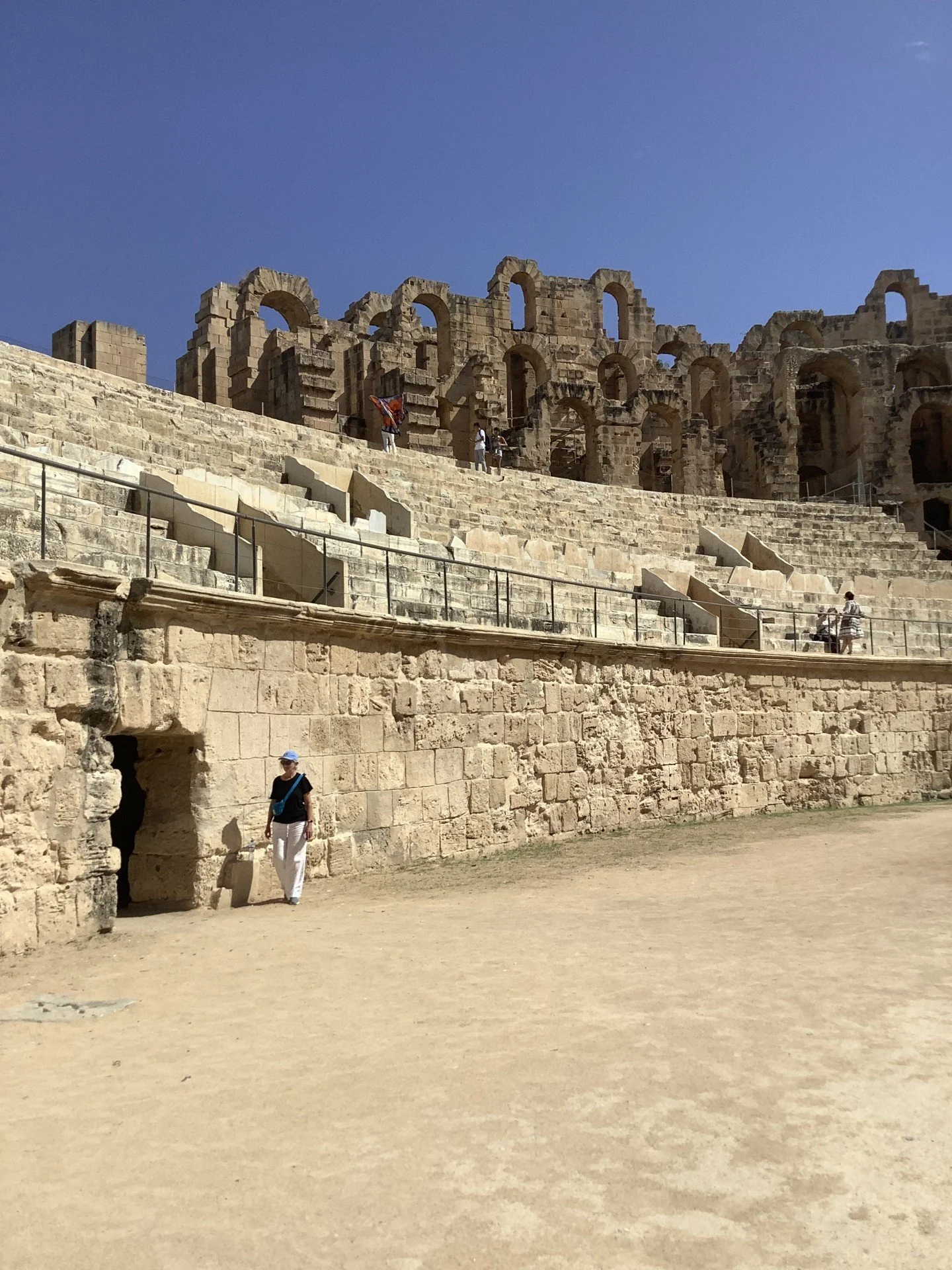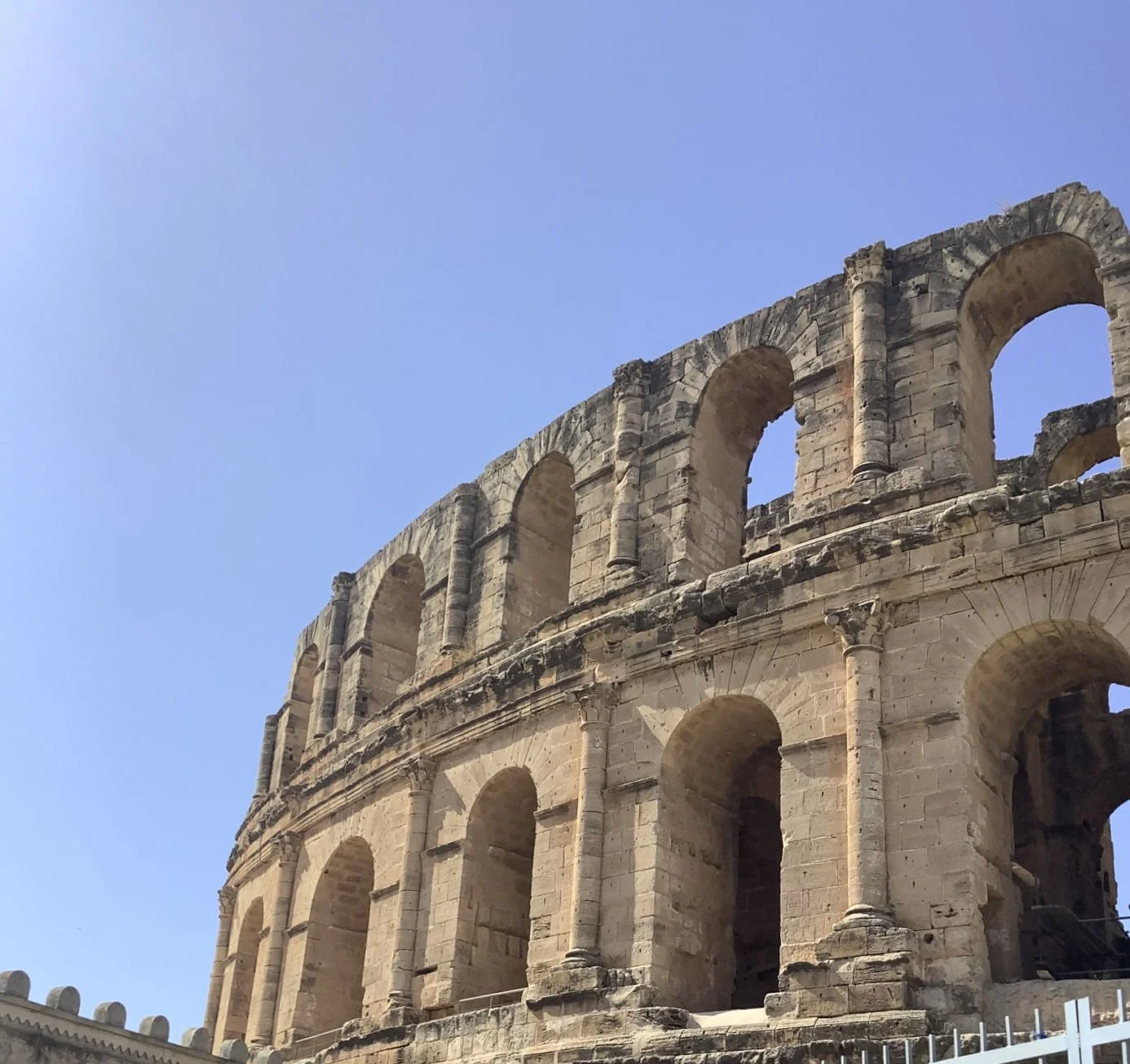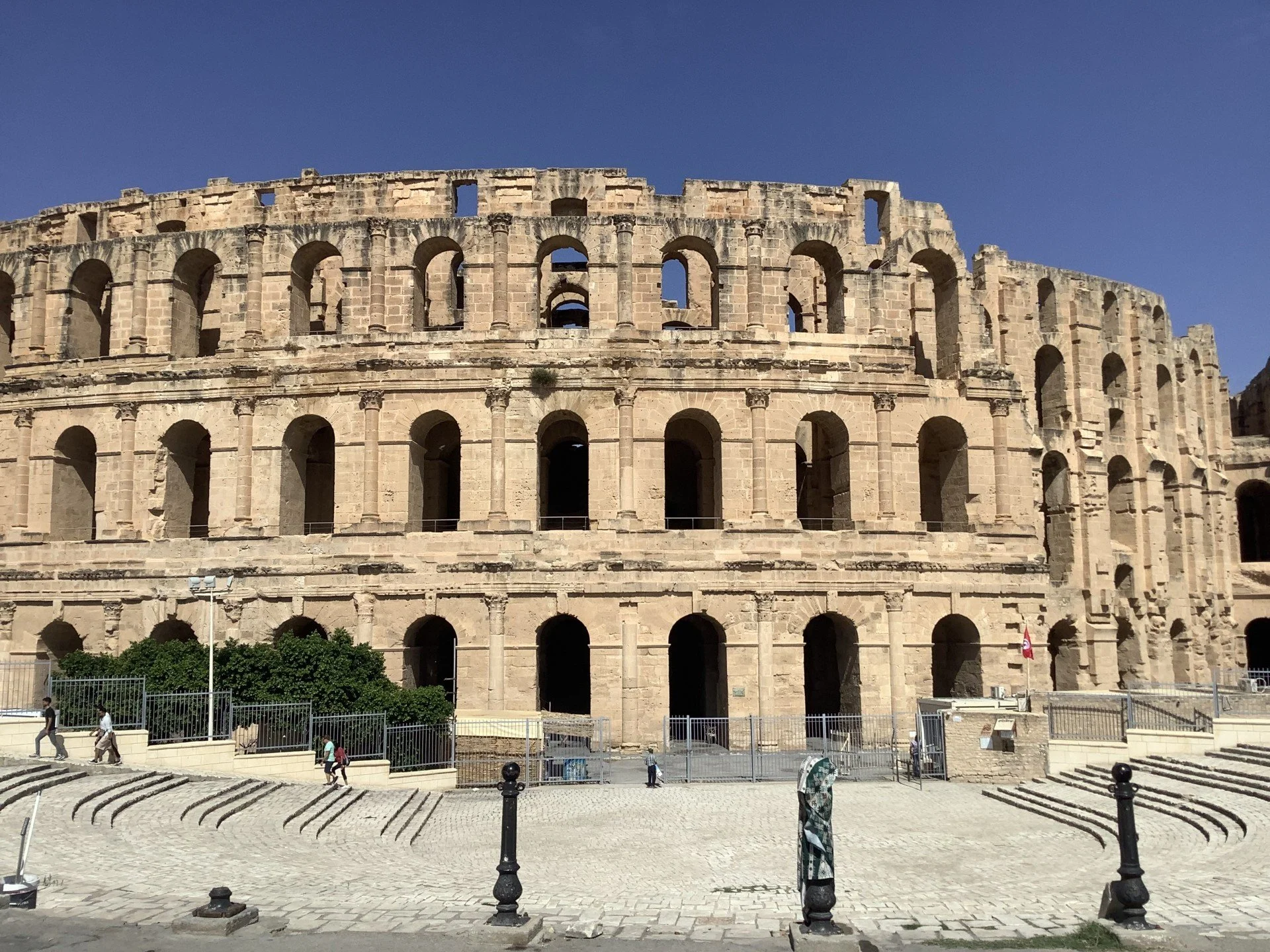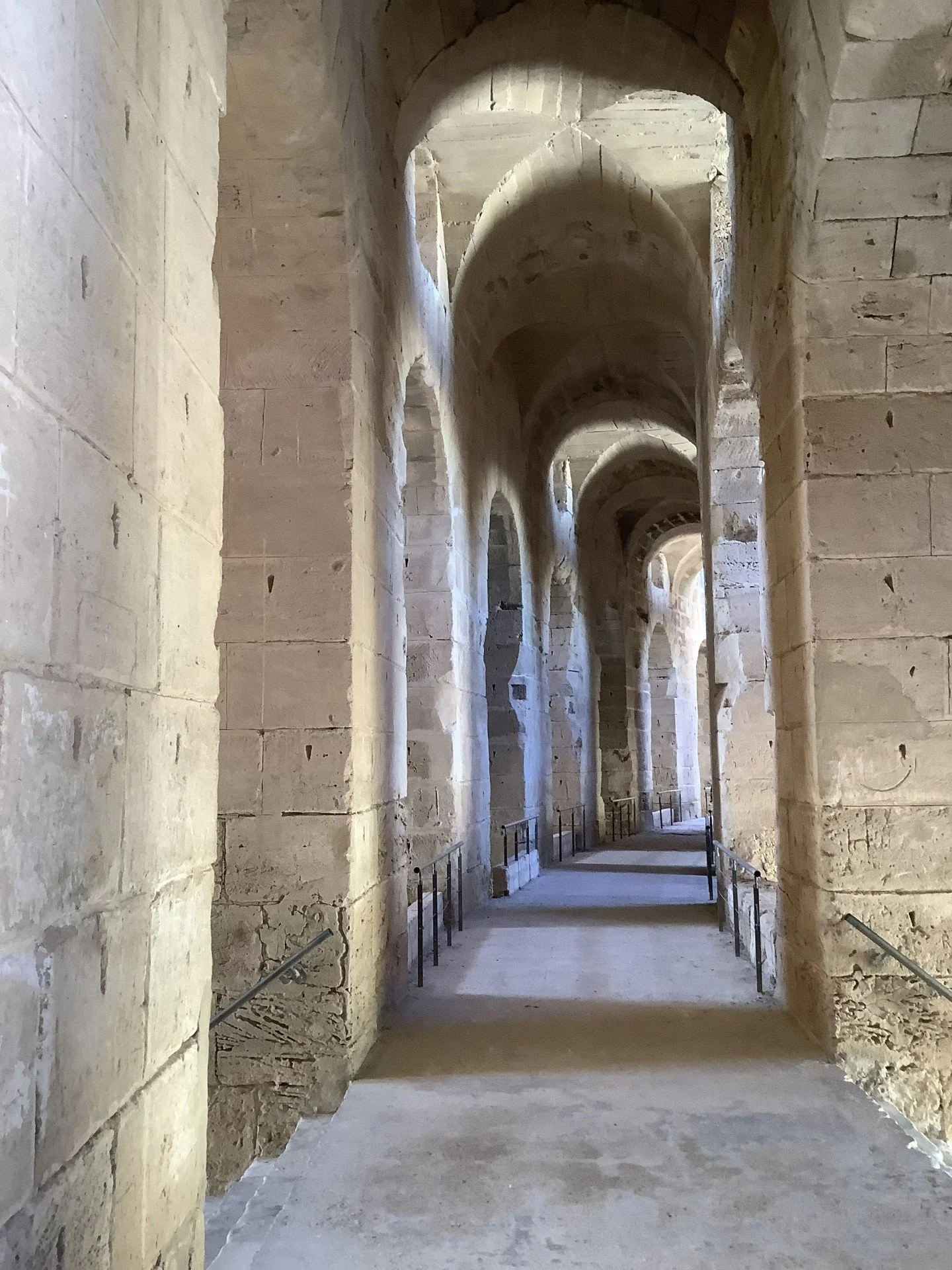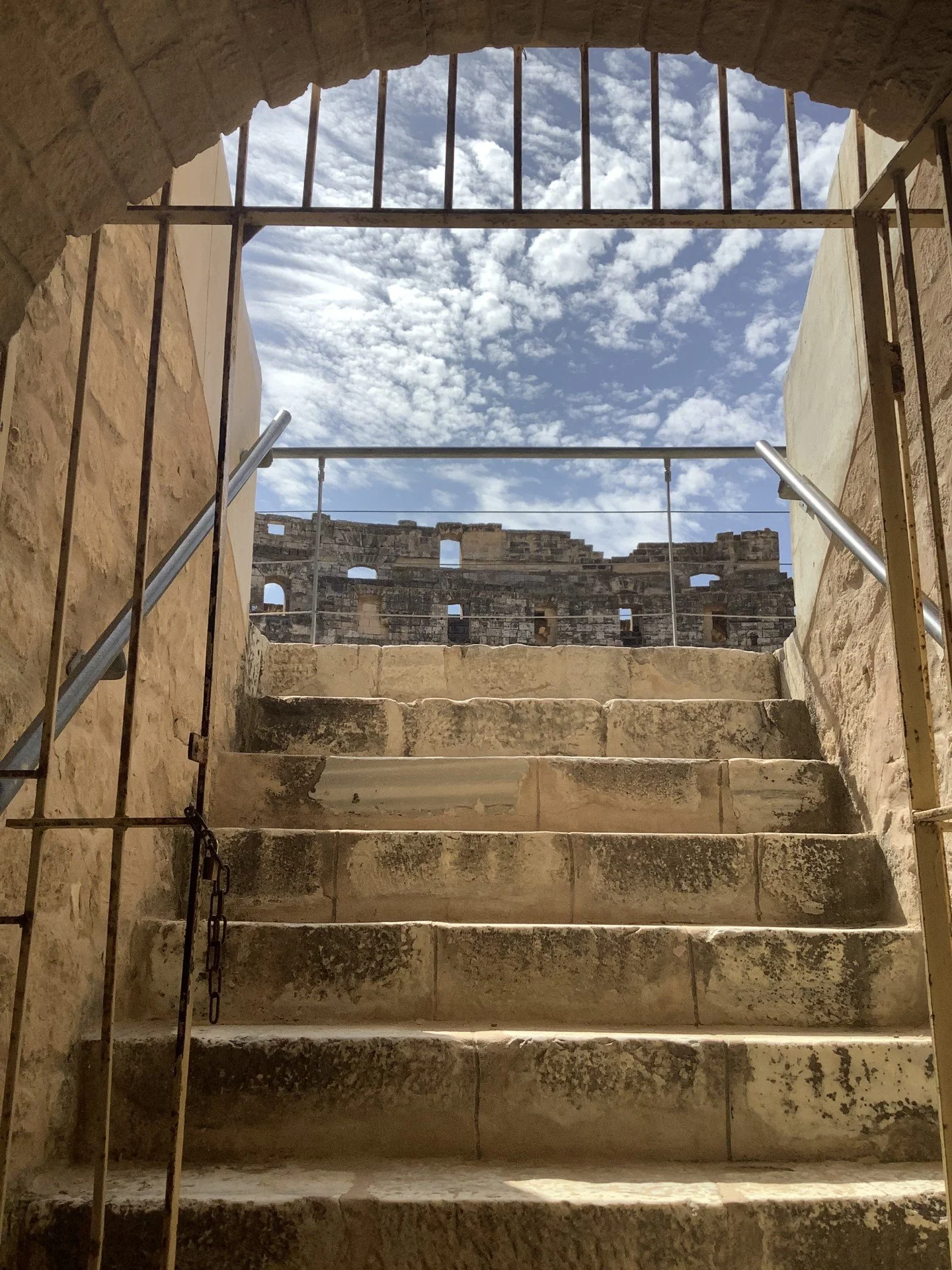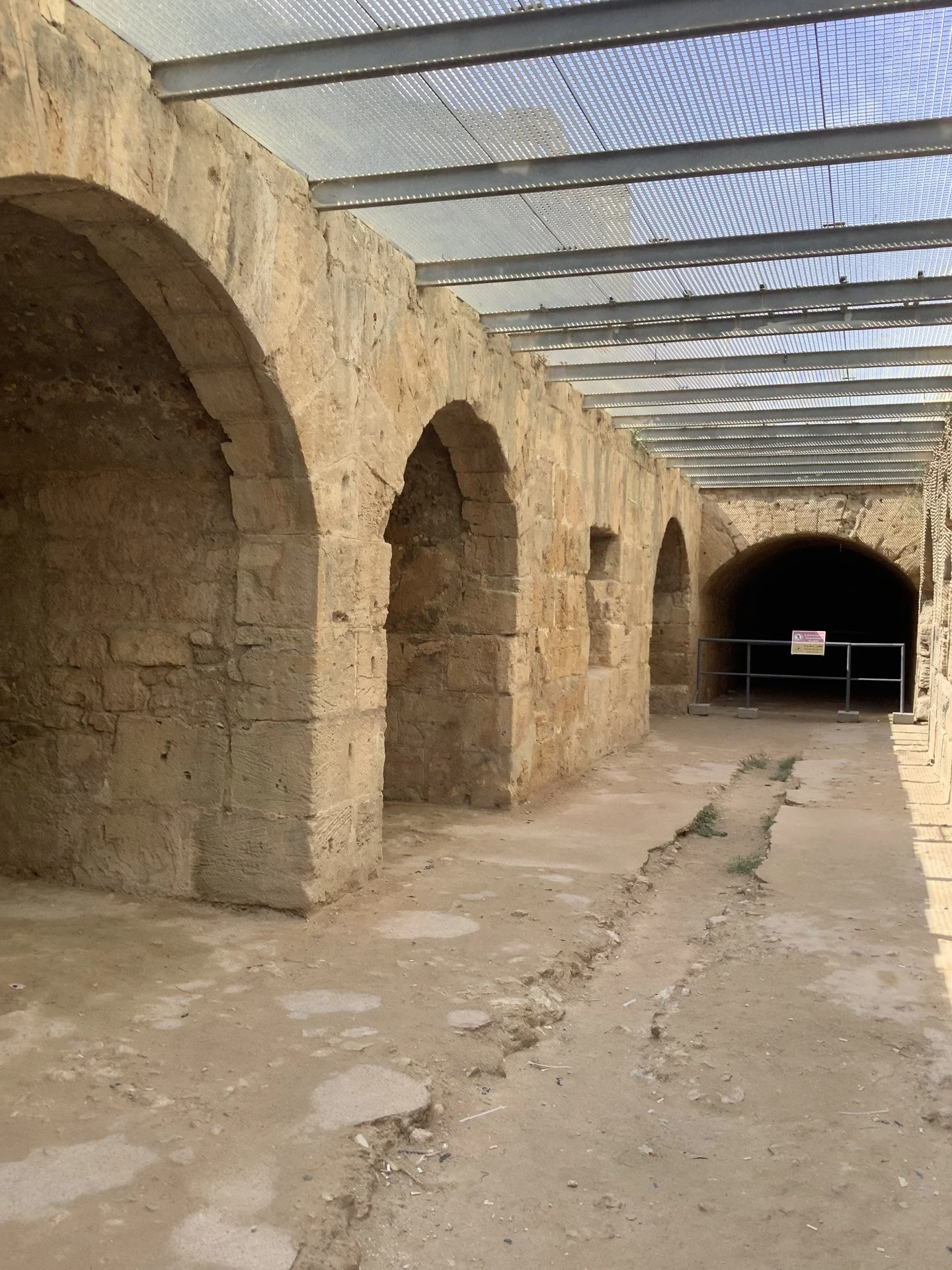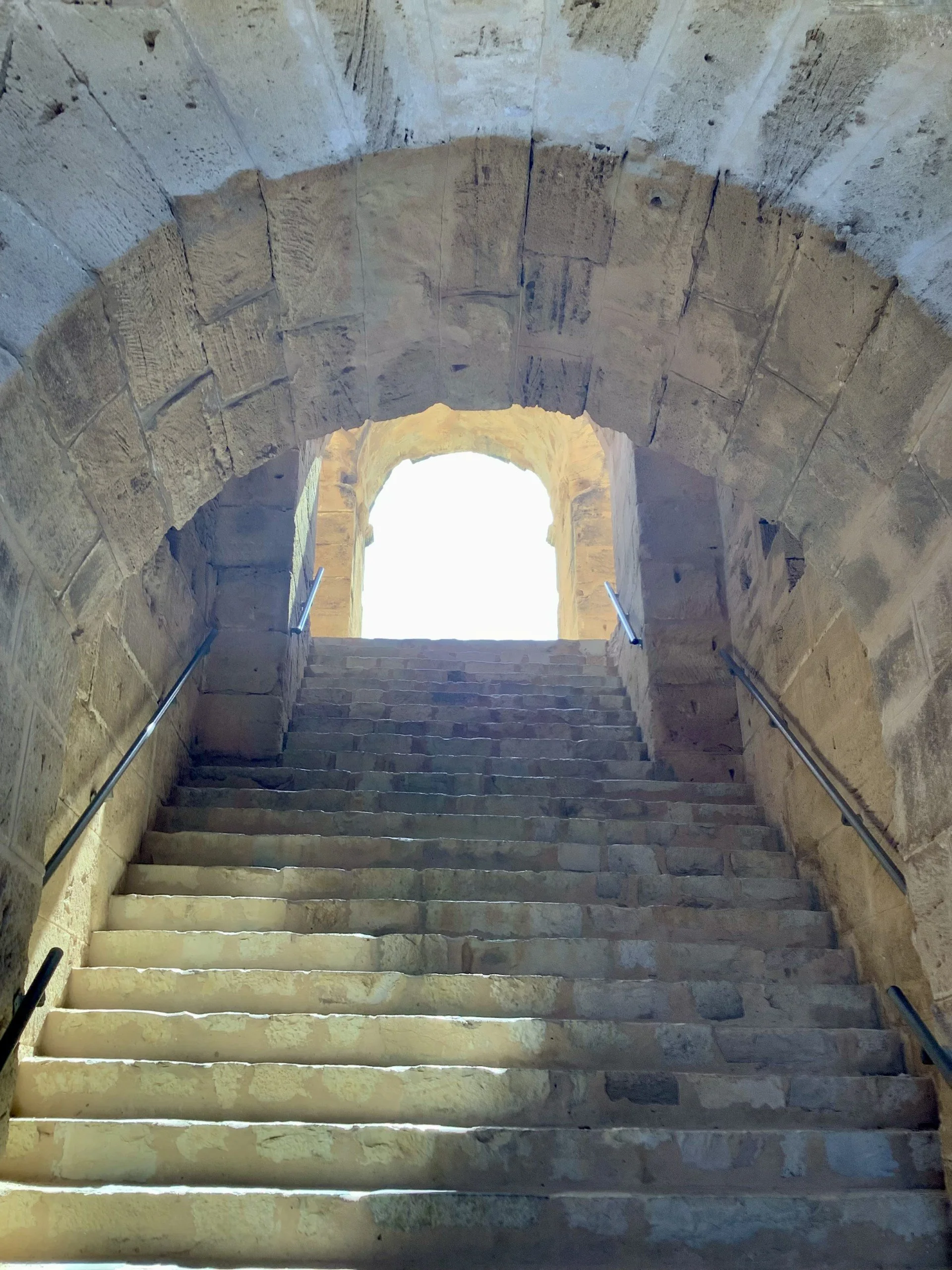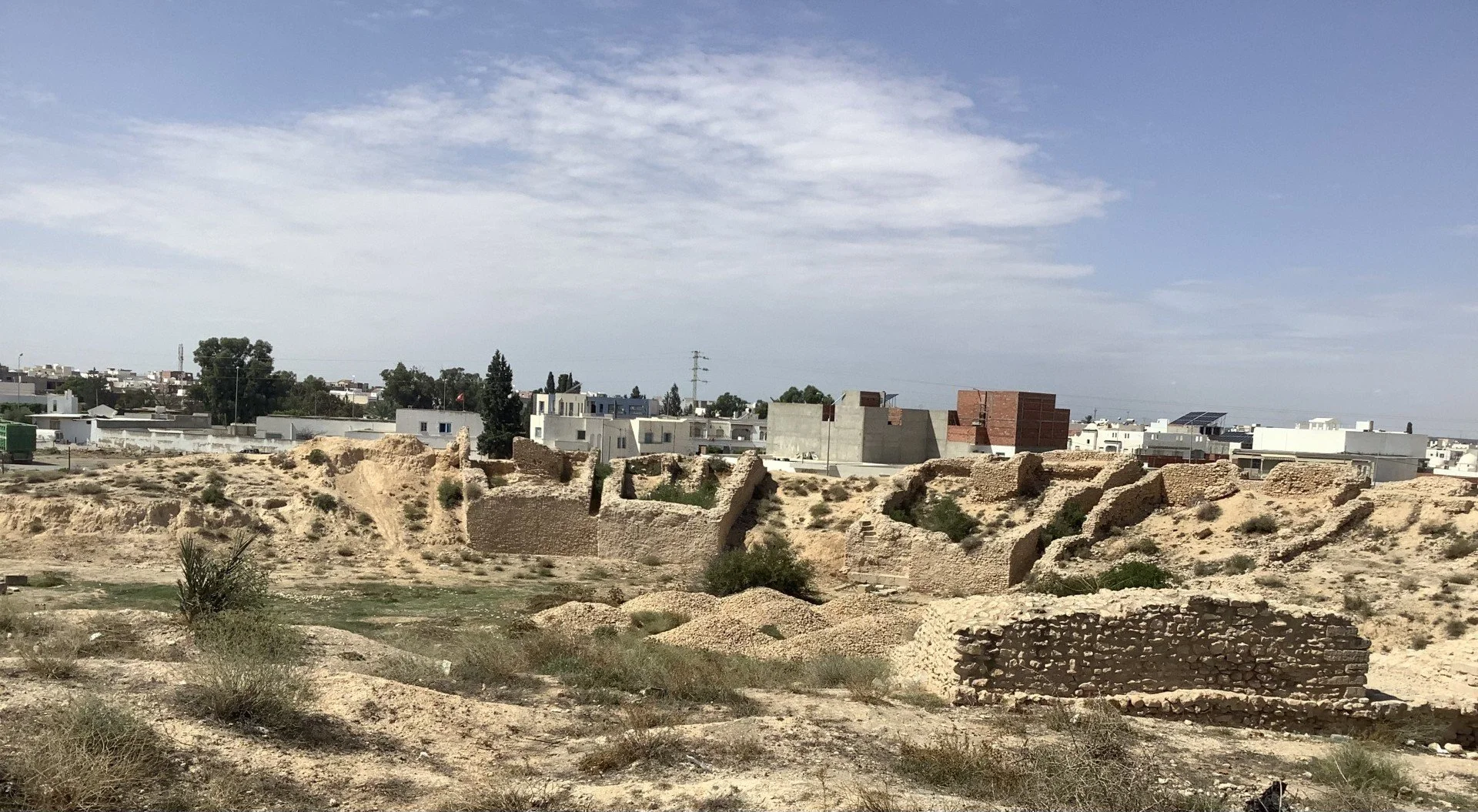L and LI El Djem (Thysdrus)
What3words –
i. turnouts.banana.kevlar
ii. victors.minstrel.reviewers
Construction - i. 238AD ii. 1st Century BC
Capacity - i. 30 - 50,000 ii. 15,000
Visited September 2025
Status – Great Amphitheatre is stunningly well preserved and a must-visit. The smaller structure is neglected and undocumented
There could be few better ways to rack up the fiftieth (and fifty-first) amphitheatre visits of this project than making it to El Djem.
The settlement of Thysdrus, founded after the defeat of Carthage, was a contender for the second most important city in Roman Africa. At the centre of grain and olive production, it was developed during the 1st century BC with an amphitheatre, forum and some opulent villas with elaborate mosaic floors belonging to those who were doing well out of the food export business. Mosaics which survive in excellent condition from some of these houses form a collection bested only by that of the Bardo in Tunis (See the Carthage page) and are displayed, together with a complete villa relocated within its precinct, in the small but perfectly sized Museum of El Djem. Such was the city’s eventual importance that a larger ‘state of the art’ amphitheatre using the latest construction techniques was commenced in 238 AD. It is thought to be the last great amphitheatre constructed before the decline of the empire and may not have been completely finished. It stands on flat ground, with no supporting topography and is a fully realised, arched and buttressed ‘Type 5’ structure which rises above the surrounding modern town and is visible from miles away.
It became a fortress and redoubt during post-Roman conflicts and one of the major breaches in the outer wall was made in 1695 during the Revolutions of Tunis, to prevent the resistance of the followers of Ali Bey al-Muradi from taking refuge inside. As Arab domination of the region progressed from the 7th century onwards, the amphitheatre was quarried and the city largely abandoned. A new capital was established some 25 miles to the north-west at Kairouan. The fabulous Great Mosque and city walls there were constructed using Roman stone, and there are Roman inscriptions visible in the walls (some of them upside-down). The many arches within the Great Mosque of Kairouan are supported by hundreds of re-used Roman columns and capitols of different designs and stones in pairs and threes. By the time the French colonists arrived in the 19th century, all that remained of Thysdrus was the hulk of the great amphitheatre and a small village, partly comprising dwellings, shops and a grain store built within its arches and vaults.
Despite the years of quarrying, neglect, and a period during which the Ottomans used it for target practice and artillery testing, the great amphitheatre of El Djem survives in remarkable condition as one of the most complete Roman structures in the world. It is now a Unesco World Heritage site, a magnet for visitors, and a popular film location. It is simply brilliant, you can climb the original staircases of the more complete southern side to the third and fourth levels and look down on the arena, as did the original spectators. Below the arena are the intact vaults which contained underground pens in which Gladiators and wild animals awaited their fates.
By comparison, the smaller, older amphitheatre is neglected and forgotten. It lies just across the road from the museum. Whilst substantial remains of its stone walls and cavea are present, it is surrounded by rusty chain link fencing bearing signs in Arabic saying ‘no entry’ and ‘no photography’ and is strewn with litter and piles of rubble. Nevertheless it is worth a look if you’re prepared to brave the large gap in the fence on the south-east side (usual caveat about unauthorised entry etc.).
The 1st century BC 'petit' amphitheatre
The 1st century BC 'petit' Amphitheatre


